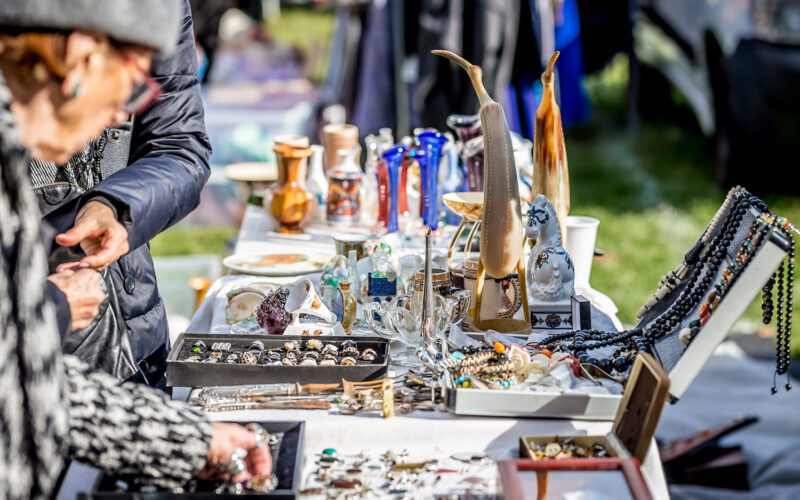Summer is a prime time for cleaning out your basement and closets and turning your unwanted clothes, appliances and knickknacks into quick cash with a garage sale. How do you bring in the buyers — and get the most money for your attic treasures? We consulted garage sale expert Ava Seavey, author of Ava’s Guide to Garage Sale Gold, for suggestions.
1. Plan ahead.
Go through your house – from attic to basement and every closet in between – and pull out everything you want to sell. Then make a list of your sale items, grouping them by category so you can keep track. “Having a garage sale is like losing weight: Everyone wants to lose, but no one wants to diet,” says Seavey. “Write everything down before, during and after the sale.”
2. Know what sells.
Don’t expect to get an offer on everything; certain items are more popular at tag sales than others. “The best sellers are household and decorative goods, tools, children’s things like baby gear, vintage items and jewelry,” says Seavey. What are buyers most likely to pass up? TVs, art and adult clothing.
3. Choose your dates wisely.
Many people hold their sales over the weekend, but that’s not always the best strategy. “The worst day for sales is Sunday,” says Seavey. “Friday and Saturday are the best times to sell, followed closely by Thursday.” Your busiest time will be right at the beginning of your sale — when buyers are hoping to snatch up the choicest items — so if your start time is 10 a.m., be prepared to open right on the dot.
4. Advertise!
Stapling a small sign to the lamppost at the end of your block might get you a few customers. But for maximum impact, you’ll need to do a little extra work. “Set clear, simple double-sided signs in the ground, clearly stating the dates of your sale,” says Seavey. Also place an ad in your local newspaper and on sites like YardSaleSearch.com, GarageSaleTracker.com and Craigslist.
5. Know how to price your goods.
“Everything must be tagged — period!” says Seavey. Not sure what your items are worth? If they’re in excellent condition, charge 50 percent of the original price; if they’re clearly worn or need repair, charge 25 percent. You might also want to set up a “freebie” box for buyers to choose from after the sale is made; it’s a good way to unload inexpensive items and make your customers feel they’ve gotten a great deal.
6. Stay organized.
Group similar items together (appliances, toys, books) and arrange clothes by type and size. Seavey recommends putting your merchandise on covered tables or high shelves, rather than boxes on the ground.
7. Be a smart negotiator.
Experienced buyers will want to haggle for a better price. Be flexible but don’t feel obligated to take less than you think the item is worth. “Feel empowered when you negotiate, and don’t be afraid to say no,” says Seavey. Another good strategy for negotiating: bundling two or more items together for a set price.







